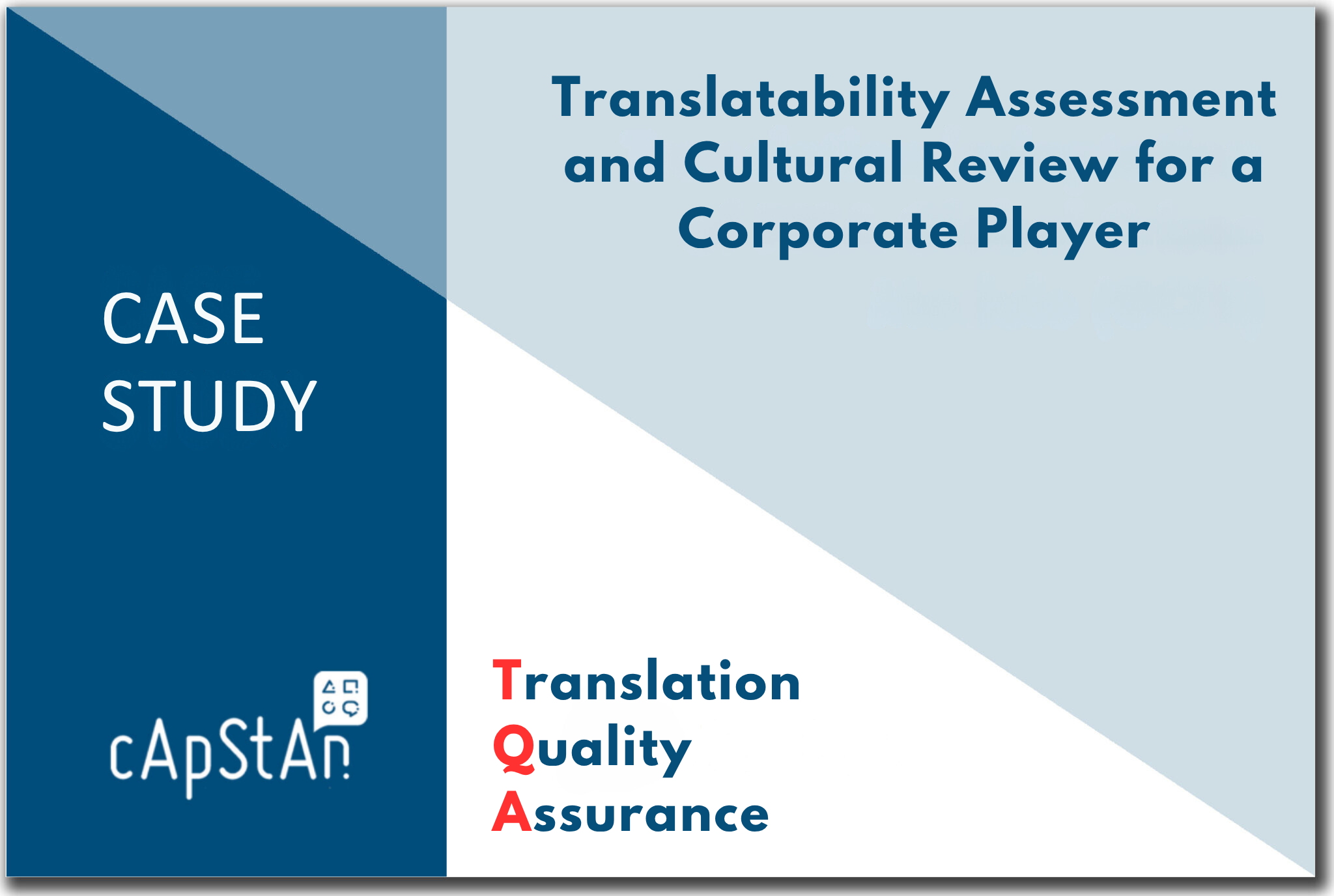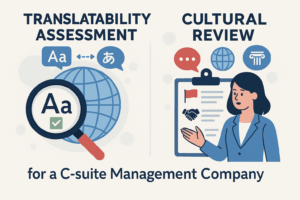
Translatability Assessment and Cultural Review for a C-suite management Company
About the client
An organization focusing on tailoring solutions for C-suite management—the highest-level executives—issued a Request for Proposals for the localisation of their assessments and surveys of leadership styles. cApStAn’s proposal prevailed based on the methodological approach, which involves linguists and I/O psychologists in controlled workflows.
Project Scope
The organization is UK-based but serves global client base; most of its materials are in English—and C-level executives are expected to be proficient in English—but considering that English proficiency is not the construct the tools want to measure, translating the instruments into their customer’s local languages seemed the way to go. The objective of the initial step in the process was to analyse the source content and identify potential translation/adaptation and cultural issues before we began translating into several languages.

Challenges
The initial request from the client was to translate the survey into different languages, but after reviewing their source materials, it became clear that it was important to start one step before that to make the content more suitable for translation. As with most workplace assessments, this organization’s survey had questions to test a given candidate’s logical reasoning in diverse situations (soft skills), which are subjective in nature and prone to ambiguity when translating, especially when it comes to different cultures. It was crucial to consider the cultural differences in workplace scenarios and also how concepts such as diversity, equity and inclusion differ from culture to culture.
For example, there has been much work done on cross-cultural differences in decision-making, with a 2016 study by Yates and Oliveira finding that “some cultures endorse individual decision making while other groups encourage the involvement of multiple people, in some form or another”. As a result, providing good translations produced by outstanding linguists do not necessarily avoid cultural perception shifts: concepts are not going to be viewed in the same way cross-culturally or may be associated with different levels of desirability. cApStAn’s approach takes this into account.
The Process: Translatability Assessment (TA)
The objective of TA is to single out concepts that are subject to cross-cultural considerations, with the aim of addressing issues pre-emptively, before translating. This process is outlined below.
- Our linguists read through the questionnaires and noted possible areas of contention
- Each question was assigned a “translatability category” from a list of 14 categories. For example, the challenge of accounting for grammatical gender was labelled as a “known difficulty” (for which there are known workarounds)
- Each linguist explained why there was an issue for their respective language group
- A Senior Linguist then consolidated the feedback from all languages into a summary of the challenges that appeared across languages and cultural groups, and provided their opinion on each challenge
- The Senior Linguist also provided suggestions for question-by-question translation and adaptation notes and, occasionally, alternative English wording to make the source material less complex or less ambiguous
- The company had their own space to comment on the linguists’ comments, promoting discussion between the parties
- Based on the linguists’ comments, the company had the final say about which changes to the source wording it wished to accept
To elaborate on some of the challenges, we can look at some of the most common issues presented when translating among Indo-European languages. Grammatical gender is a significant one. The company opted to not use the generic masculine form of address—a common practice in many Hebrew and Spanish texts—instead wishing to either create male and female versions of the documents or a gender-neutral version if the language allows such for more inclusivity.
Similarly, many Indo-European languages distinguish between formal and informal pronouns. The Senior Linguist notes that using informal pronouns in Polish, for example, would be socially acceptable and help avoid grammatical complications in the language, while it could be inappropriate to use informal language for business purposes in places like Korea and Japan. The company agreed to use the most appropriate form for each language and its culture.
Conclusions and Outcomes
Our linguists’ rigorous evaluations not only provided the company with the best solutions for cross-cultural understanding and appropriateness, but also helped disambiguate some of their original source material in English. Additionally, cApStAn was ethical in its allocation of resources—we chose not to hire linguists for languages that would most likely treat certain concepts the same way. The comments about Spanish, Portuguese, and maybe French would likely be very similar given they are all European Romance languages, which saved the organization time and cost without sacrificing cultural appropriateness.
Overall, our client gave positive feedback about working with us and we continue to collaborate with them for translation and other language related solutions.
Want to try out this process on your materials?
Select some sample items or sample questions, and request a free pilot or contact us for more details at hermes@capstan.be.
References
Yates, J. F., & de Oliveira, S. (2016). Culture and decision making. Organizational behavior and human decision processes, 136, 106–118.
https://doi.org/10.1016/j.obhdp.2016.05.003
See also, from our blog
“Linguistic Quality Assurance and Control of a worldwide public opinion survey translation“